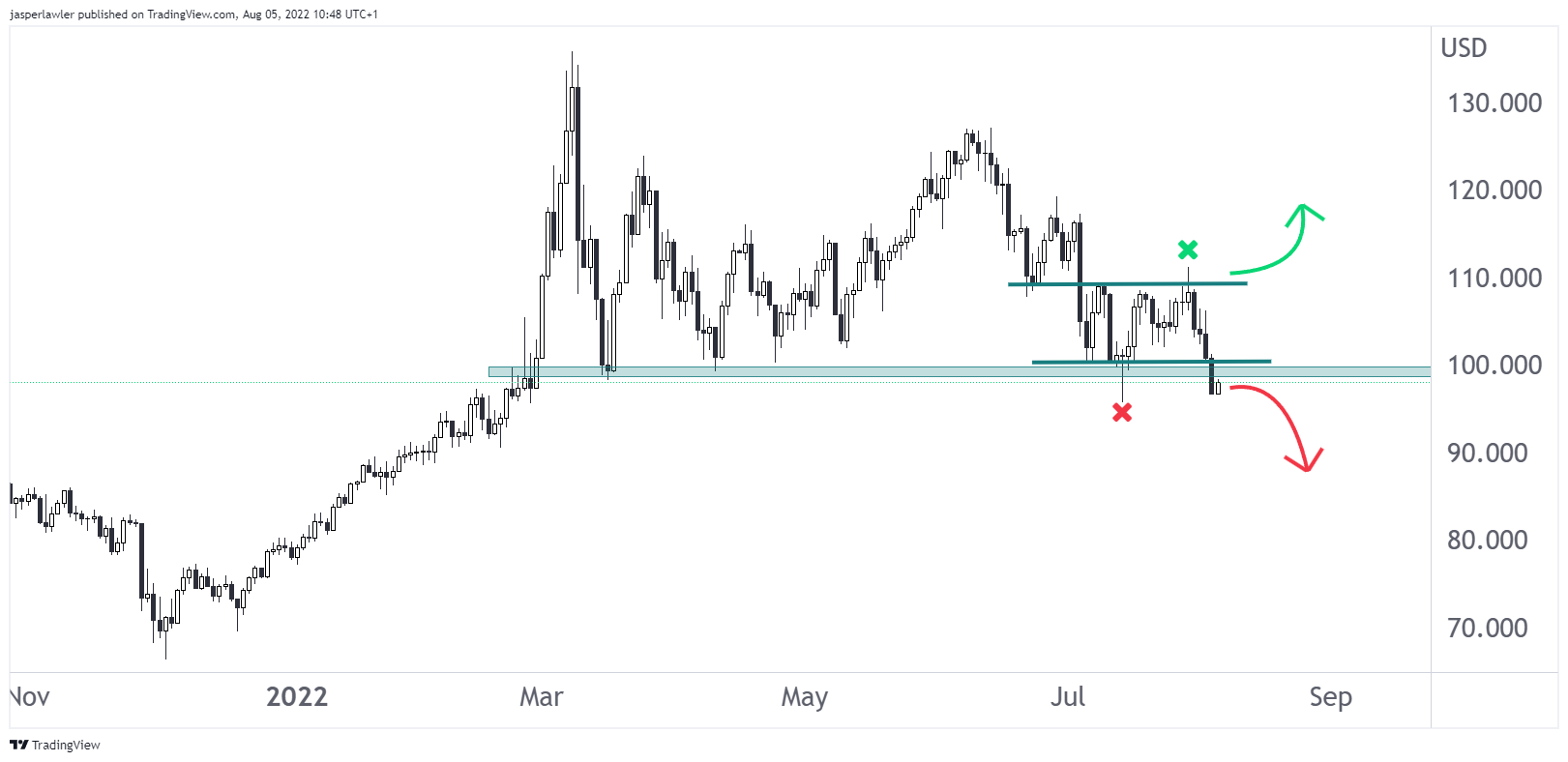There has been a significant breakdown in crude oil prices this week. WTI crude fell below $90 while Brent is back under the psychologically and technically significant $100 level.
- WTI and Brent futures contracts both dropped under major technical support
- OPEC+ raised output (barely) by 100k bpd
- A shock buildup of inventories in the past week hints at lower demand
- The blockade of Russian gas to the EU
- European governments are bringing in energy rationing
SUPPLY
The big official news this week came from OPEC+ and its latest plans for production. The extended oil cartel, which includes Russia, announced it plans to raise its output target by 100,000 bpd from September. Since 100,000 bpd represents less than 0.1% of global oil demand, the increase didn’t really move the needle. The cartel cited a lack of spare capacity to increase production any further. A lack of investment in new exploration owing to low prices and green policies means OPEC production is close to its maximum.
Oil prices saw a kneejerk move higher in response to the unexpectedly small output increase but the gains didn’t last and prices actually ended the day lower.
For most of 2022, the critical driver for the price of oil has been supplying or lack thereof. The prediction that Russian oil supply would dry up under sanctions has not come to pass. Russian energy exports are down over the year but for the most part, have just been redirected from West to East. What Europe didn’t want or couldn’t take has been happily accepted by China, India and others.
Even the agreement for a near-complete embargo of Russian energy into the EU by the end of the year has not been able to sustain a rally in oil prices.
The conclusion therefore must be that demand is the swing factor.
DEMAND
Slowing economic growthGiven the stable supply backdrop, oil prices would likely be rising again if there were expectations in the market for a strong economy. However, the price of oil is falling.
This week saw a stark sign of slowing gasoline demand when US oil inventories saw a surprise build of 4.5 million barrels in the week to July 29 according to EIA data, compared with expectations for a 600,000-barrel draw.
The lack of spare capacity in oil markets, supply chain disruption from lockdowns and reopening as well as the problems caused by the Russian invasion of Ukraine has spurred inflation.
Multi-decade high Inflation and the resulting policy response to raise interest rates are weighing heavily on economic growth prospects. The US entered a technical recession in the second quarter and the Bank of England has warned a recession in the UK is likely by the end of the year. Even the IMF has accepted the rising possibility of a global recession, though it is still forecasting growth.
Energy rationing
There is an increasingly real prospect of energy rationing this winter in Europe. The policy has the explicit purpose of bringing down energy demand to fit the low supplies owing to sanctions on Russian oil & gas, usually the main source of energy for the continent.
“Without strong policy intervention on energy use, risks remain high that the world economy falls off-track for recovery.” - IEA oil report in July.
This week Spain introduced a controversial ban on setting air conditioners below 27 degrees C, and there is an equivalent limit on heating planned for the winter. In Germany people are being advised to shower less often - and such policies are at risk of getting less ‘voluntary’ as we move into winter.
If people are forced via government policy to lower energy demand, then the price of oil should reflect this lower energy demand with lower prices and reflect the negative effect on economic growth that these policies would likely have- and that seems to be already what has started happening.
RISK ON / RISK OFF
Equities have turned noticeably more risk-on in the last week but this has interestingly not been matched with a rise in oil prices, which tend to benefit from a risk-on environment. If the upside momentum in equities continues, it could help lift oil prices too. On the flip side, the weakness in oil prices could be a bad omen for the latest ‘bear market rally’ in stocks.
BCO - Daily candlestick chart

Source: FlowBank / TradingView
The price of oil has broken down from a narrow trading range between $100 and $110 pb. This narrower range sits at the bottom of the much bigger $100-$140 pb price range.
With $100 having held this long as support, now that it has broken, the price could unwind relatively quickly back towards lows from the start of the year near $70.
For the bulls to have any real hope, a break above $110 would be needed, implying a test of the $120-$125 resistance formed by the late March and June peaks.





